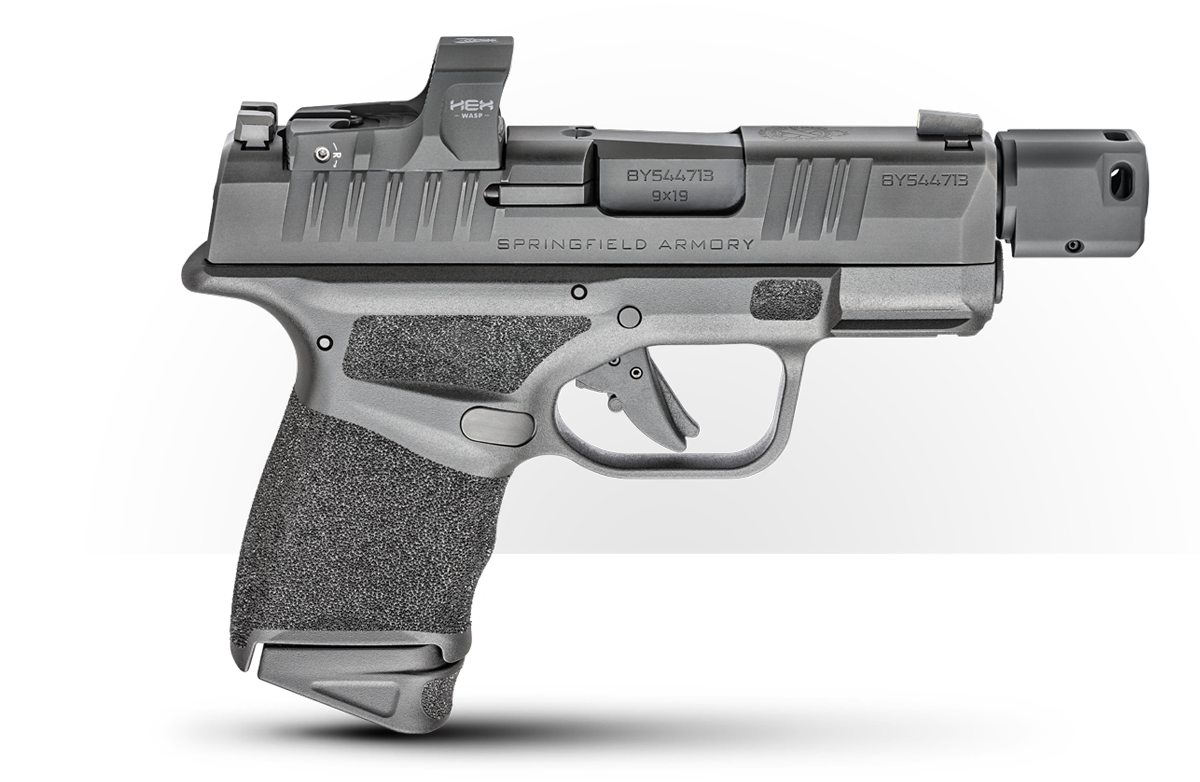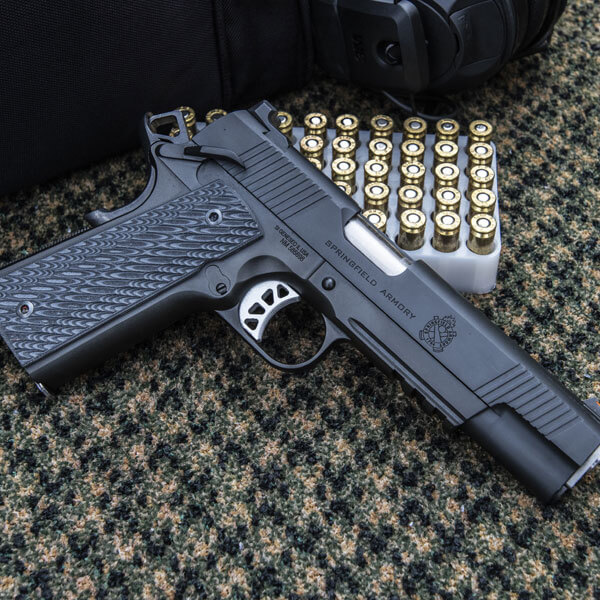Brakes, Comps & Flash Hiders — Different Types of Muzzle Devices
August 4th, 2024
7 minute read
Every profession and industry has its own specific language. From acronyms that get pronounced like words, to phrases you’d never heard anywhere else, they’ve all got a form of communication that only those who are “in-the-know” will know.
The firearms industry is no different. In fact, we’ve assembled a list of 21 specialized firearms terms to help new shooters.

Even if you’re brand new to this industry and its specific lingo, it’s highly likely you’ve encountered one, two, or even all three of these terms when shopping for a gun: muzzle brake, compensator and flash hider.
If you’re a seasoned industry professional, then you’ve definitely heard the terms before. Undoubtedly, you know what they mean and how they differ from one another.
For the newcomers, this piece will teach you about the three terms and their different purposes. For the seasoned shooters? It’s okay to read this article. I won’t tell anyone you’re brushing up on your knowledge base!
Muzzle Brakes
What is a muzzle brake? In the simplest of explanations, a muzzle brake reduces felt recoil. There is, however, more to it than that.
Energy from the ignition of your cartridge has to go somewhere. (Remember that Newton fella and his laws?) That means just as energy from the escaping gas is propelling your projectile forward, it is also propelling your firearm rearward, creating what is known as recoil.
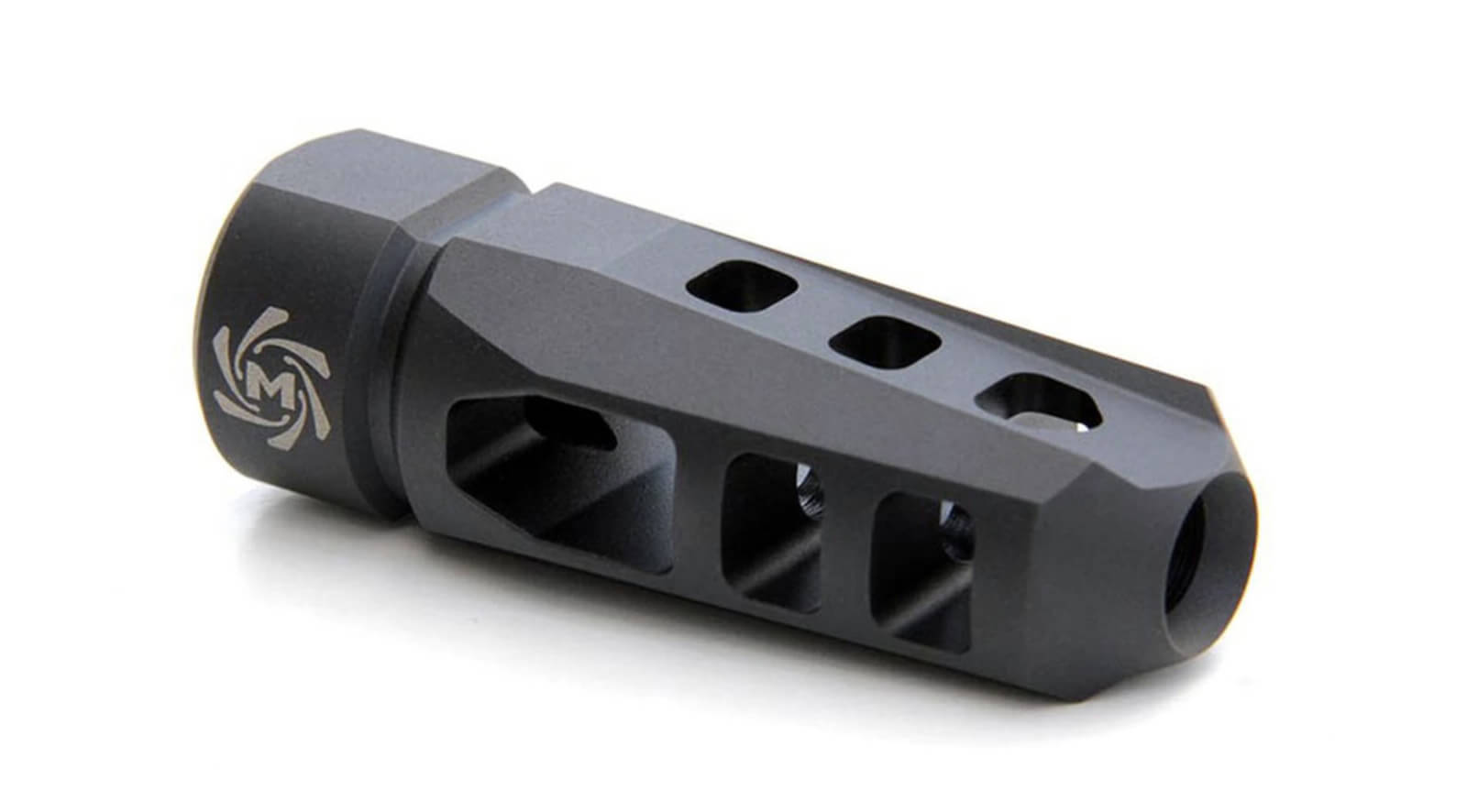
In order to reduce recoil, the escaping gas must be redirected, which is what a muzzle brake does. In some cases, the gas is redirected through a series of vents that are perpendicular to the barrel at 90-degree angles. In simpler terms, it means the gas comes out the top or bottom of the brake instead of the muzzle end of the brake. This redirection provides less gas (and energy) to be pushed back onto the shooter. Other vents are designed to send some of the gas back at a 45-degree angle to the shooter, which pulls the gun forward.
Muzzle brakes can have either of these kinds of vents, or both. Basically, the goal is to send the gas in any direction other than backward. This comes especially in handy when you’re shooting a large caliber rifle. The bigger the caliber, the more the energy. That extra energy translates into more recoil, which makes those large calibers less fun to shoot the more you do it, unless you’ve got a good muzzle brake.
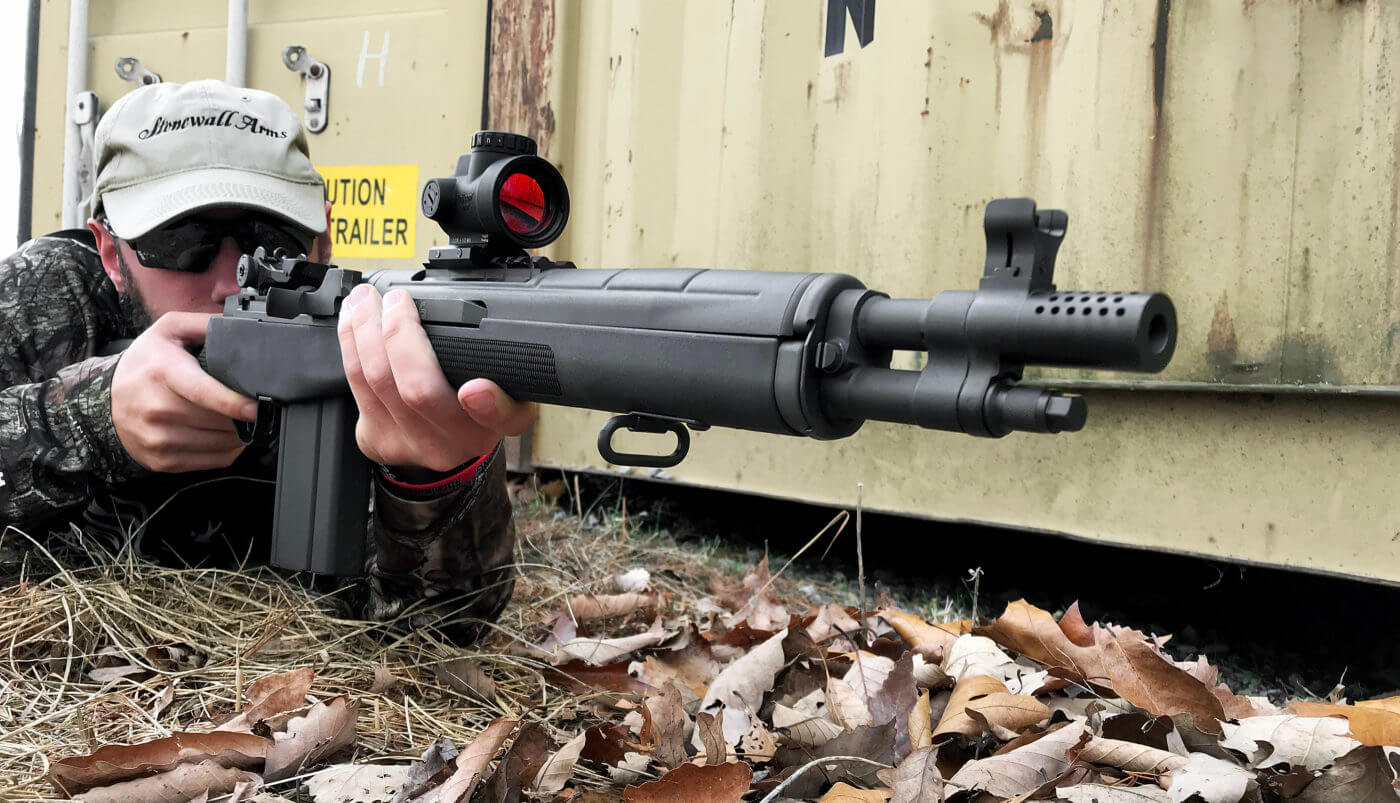
Brakes do, however, have a couple of downsides to them. First of all, do muzzle brakes make guns louder? In some cases, yes. Because the gases are sometimes directed back at the shooter, they can actually increase the sound intensity of the shot.
The other downside is safety-related. A muzzle brake is not trying to disrupt the flow of the gas in any way. It is only trying to re-route it in an effective method to reduce the recoil. As a result, the gas is still moving at an incredibly high rate of speed when it leaves the brake, making it potentially dangerous to be right next to it when a shot is fired. Even with smaller calibers, the concept of combustion is still the same. Hot gases can burn, regardless of caliber. But to be frank, you should not be that close to the muzzle, anyway.
Compensators
As the name implies, a compensator is making up for something, but what? Again, we go back to Newton. All of that energy has to go somewhere when the powder charge is ignited. That rapidly-expanding and accelerating gas tends to cause the muzzle to rise when it is escaping the barrel. This is not a good thing because it pulls your firearm off target, which in turn slows down follow-up shots.
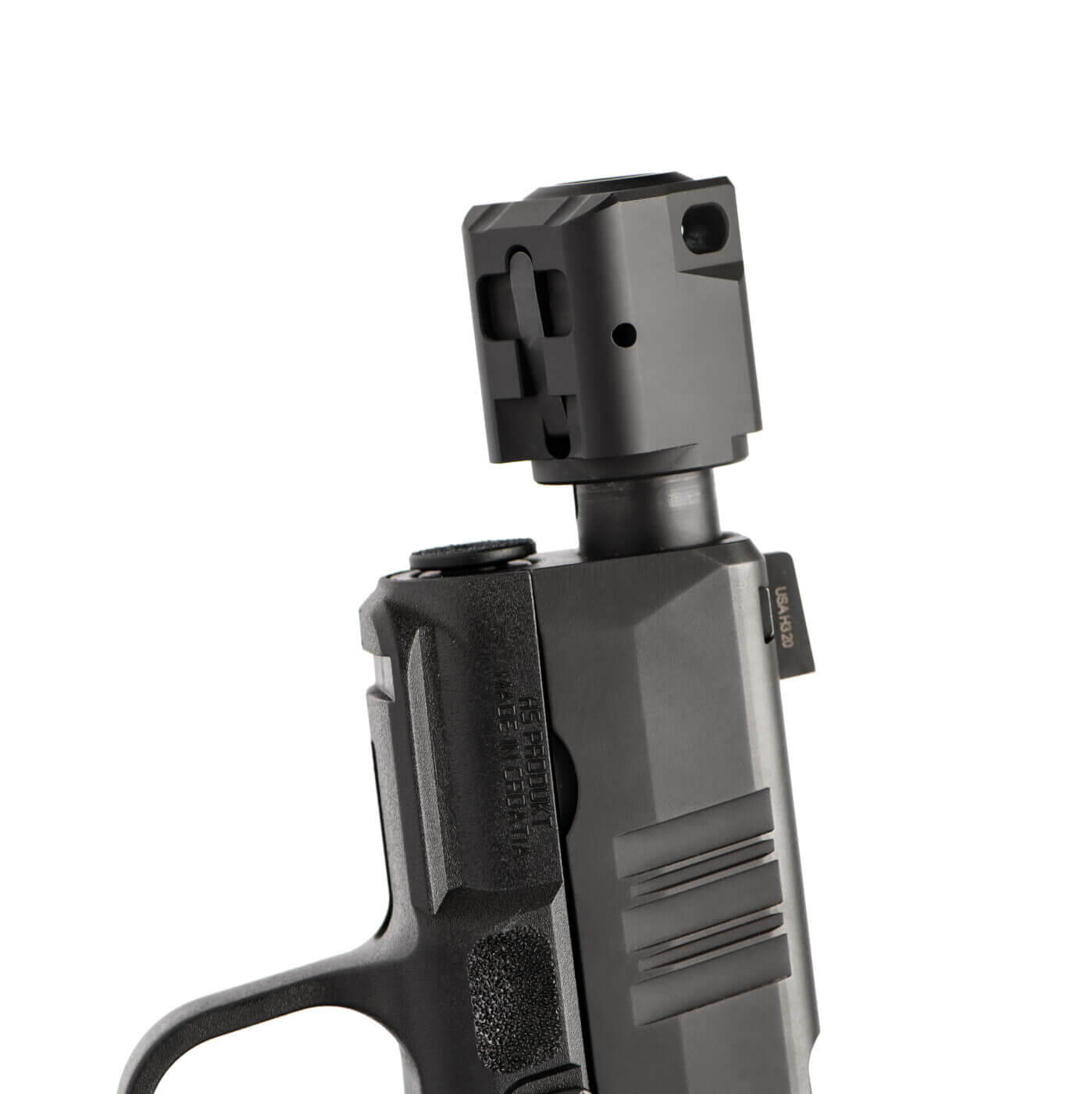
What does a compensator do? A compensator is a muzzle device that is designed to counteract muzzle rise when a shot is fired. Holes and/or vents in the device point in certain directions to minimize muzzle rise.
A compensator can be easily visibly distinguished from a muzzle brake or a flash hider by looking at where the holes or vents are not located: on the bottom.
Holes on the bottom would cause the expelled gas to push the barrel up, which is the exact opposite of what we’re trying to accomplish. Instead, with holes on the sides, and especially on the top, the gas pushes down on the barrel, helping to keep the shooter on target. A good example of this is the Hellcat RDP with its Self Indexing Compensator.
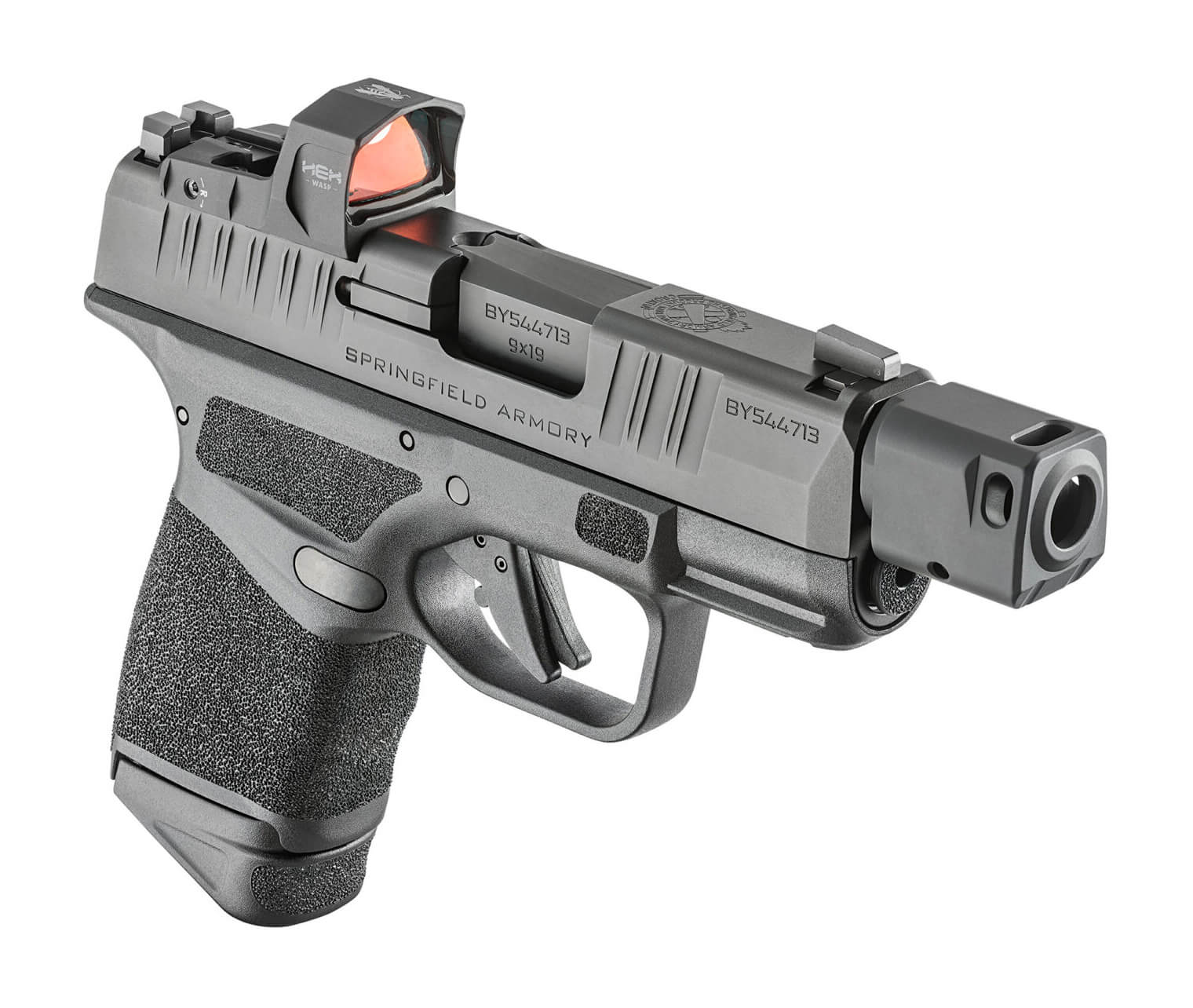
The escaping gases are not causing the firearm to rise up a tremendous amount, but that’s not the point. Any amount of rise translates into more time spent re-acquiring the target before another successful shot can be made. Even though it may only translate into a second or so of added time, that can make a big difference in the long run. Just ask any competitive shooter who missed the first-place time by only one second.
However, be aware that in a low-light or no-light situation, this redirected gas can obscure your vision when doing follow-up shots.
Flash Hiders
Flash hiders do exactly what their name says they do. They help hide the flash, but there’s more to it than that.
First off, what is the muzzle flash? Well, the flash is the visible result of the hot gases created by the ignition of the gunpowder in your cartridge. Those gases drive the projectile out of the barrel and follow suit right behind it.
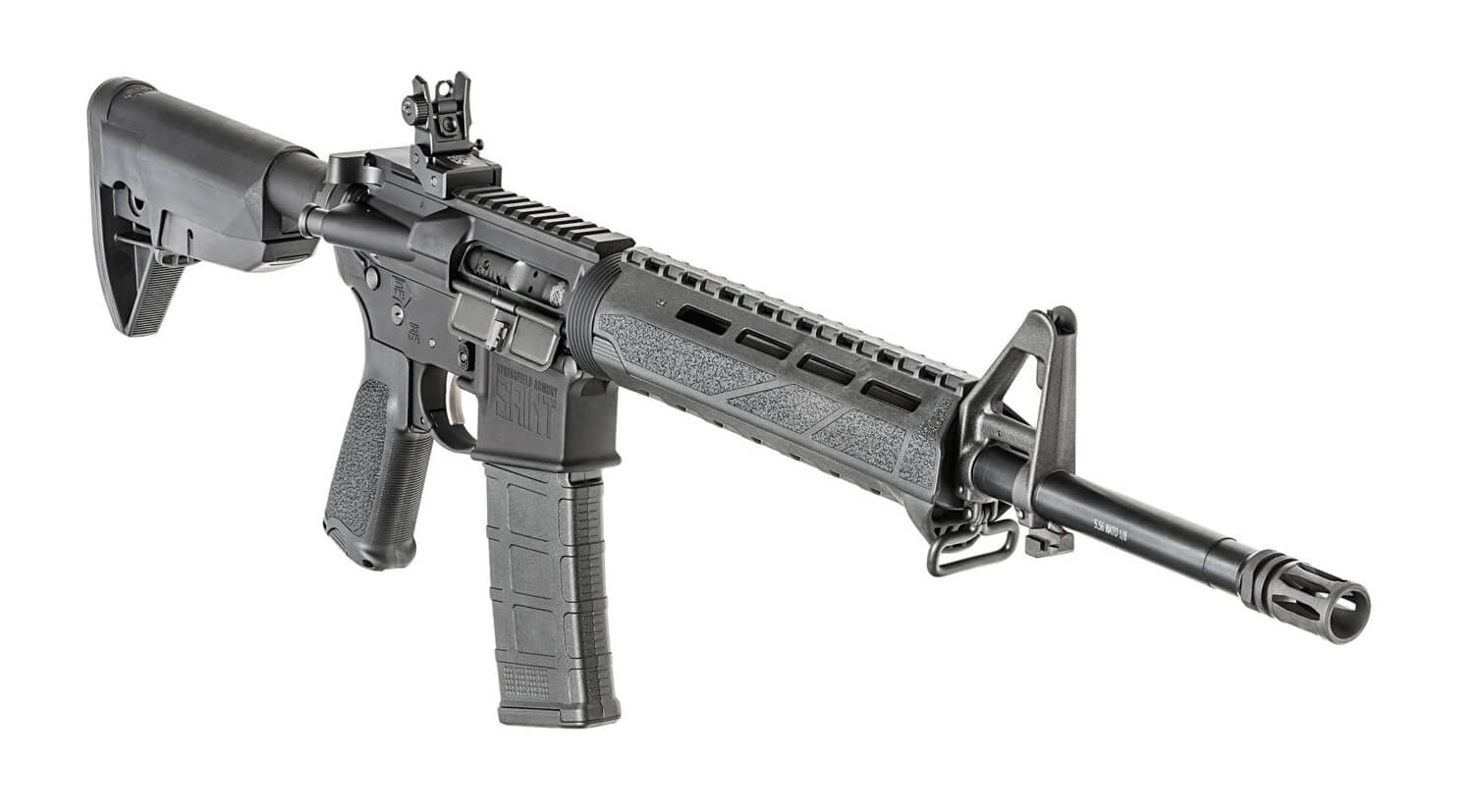
There’s no way to get rid of the flash completely, but it can be reduced. Another benefit of the flash hider is that it helps preserve the shooter’s vision in low and no light scenarios.
If a shooter’s eyes are exposed to the full intensity of the escaping gas, the pupils will respond by contracting to reduce the amount of light let in. Unfortunately, this change is not undone in an instant. Instead, it puts the shooter at a vulnerable disadvantage while their eyes are readjusting to the darkness.
So, how does a flash hider work? The flash hider introduces cooler, ambient air to dissipate the considerably hotter expended gas.
The air is introduced through a variety of slots or holes in the flash hider. This allows the cooler air to impact the hot gas from a variety of different directions. Doing so disrupts the path of the gas and makes it dissipate faster, thereby hiding the flash.
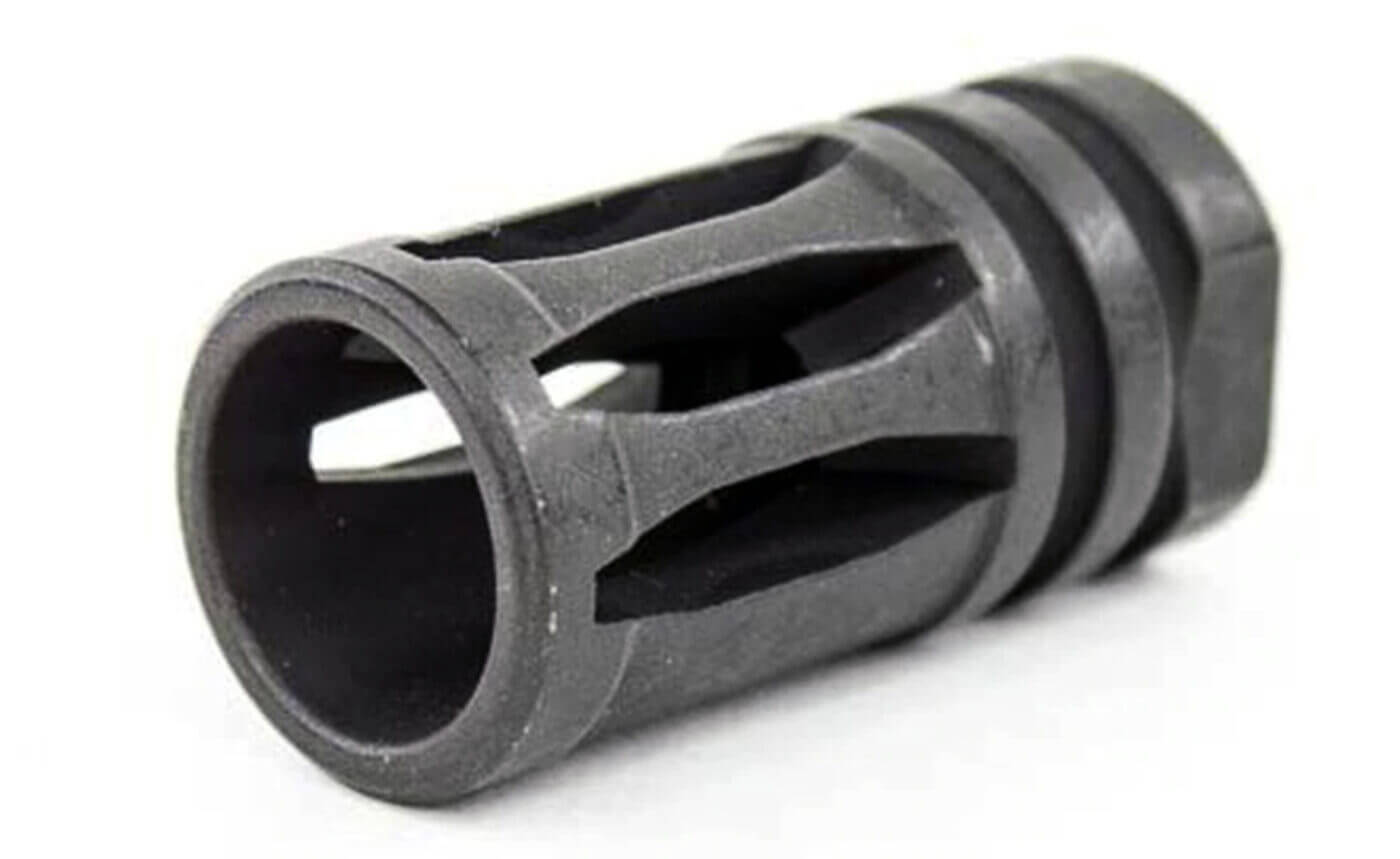
Even though a flash hider can do a great job of disrupting the hot gases, it does have limitations. For example, they only work for the naked eye by reducing the flash visibility on the visible spectrum of light. Muzzle flash viewed through the infrared spectrum will always be present because it is picking up an entirely different kind of light that cannot be deterred by redirection.
This relates to another drawback. Flash hiders also only work in low or no light situations. A flash hider provides no visible disruption of flash in regular daylight.
Flash hiders do not reduce the sound of a gunshot. To protect your hearing, you will need a sound suppressor and/or a good set of hearing protection.
The Recap
If you skipped ahead hoping to avoid reading more than 1,000 words to learn the difference between the three objects, here’s a brief overview:
Muzzle Brake: Redirects gas to the rear or to the side to reduce felt recoil. Gas directed on an angle to the rear helps pull the gun forward instead of letting it be pushed backward. Brakes tend to increase noise because gases are directed to the side at 90-degree angles and the rear at 45-degree angles, which also makes it dangerous to stand next to one when firing because it puts you in the direct path of the gas.
Compensator: The escaping gas from a fired projectile tends to push the muzzle up. A compensator counteracts the rise by redirecting gas down or to the sides. This device will never have holes on the bottom, because it would be counterproductive to direct gas in a direction that would assist muzzle rise. Not recommended for use in low or no light scenarios because the flash is right in the shooter’s field of vision.
Flash Hider: Visually disrupts the flash of hot gas by introducing the surrounding cooler air at all different angles. This causes the gas to dissipate more quickly and in a variety of directions, which help conceal the location of a shooter in a low or no light situation. The device offers no advantage under infrared light or in broad daylight.
Editor’s Note: Please be sure to check out The Armory Life Forum, where you can comment about our daily articles, as well as just talk guns and gear. Click the “Go To Forum Thread” link below to jump in!
Join the Discussion
Featured in this article
Continue Reading
Did you enjoy this article?

 148
148




